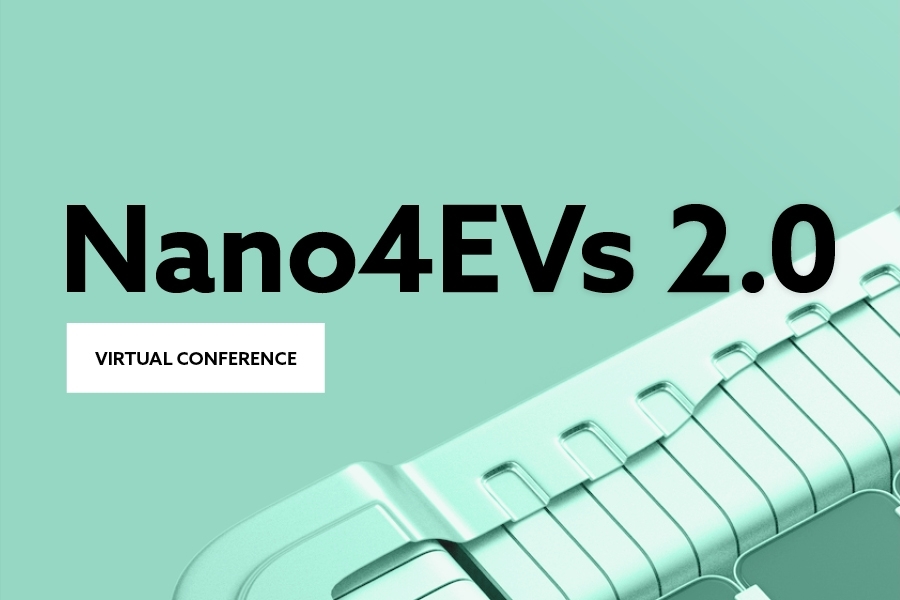Nano4EVs 2.0
This event will focus on the role of nanomaterials to ongoing materials development in energy storage, reduction and conversion.
Please login or create your My IOM3 Account to access this on-demand webinar

Following on from the hugely successful Nano4EVs launch event in November 2020, Nano4EVs 2.0 will encompass a wider range of themes to highlight the diverse role of nanomaterials in future electric vehicles.
Who should attend:
This event will be of interest to both industry and academic audiences involved in: Electric vehicle manufacture (OEMs & Supply chains), Materials manufacture and conversion, Device & Component manufacture.
Themes to be covered:
- Energy Storage - including batteries, supercapacitors, hydrogen storage
- Energy Conversion - including fuel cells
- Energy Minimisation - including lightweighting, energy loss reduction
The event will feature the following presentations:
KEYNOTE - Carlo Fiorella | The role of materials science and engineering in the megatrend of electrification
Carlo Fiorella, Global Market Manager for Automotive at DuPont, will be joining the Nano4EVs 2.0 to give a keynote presentation on the role of materials science and engineering in the megatrend of electrification. As a leader in the automotive engineering space with over a century of experience, DuPont works closely with OEM partners to help them solve complex challenges. A key element of their innovative approach are their technical partnerships with motorsports organisations such as the Alpine F1 Team and Nissan e.dams Formula E team – both designed to challenge, test and improve the performance of electric technologies on both track and road. Giving examples from DuPont’s innovative portfolio of solutions, Carlo will explore how material science experts and engineers can best work with automakers to support rapid growth in the ever-evolving electrification space to bring safer and better performing EVs to our roads.
Paul Denney | The Potential of Graphene in the Emerging EV Market
Graphene is a new technology having only been isolated in 2004, a feat that went on to win the Nobel prize for the two Manchester based academics who achieved it. Much of the research that has gone into graphene since then has focused on creating graphene reliably and then creating it in bulk.
2D-Tech is the world's first company to produce the graphene council certified products, Nanene and GNP-HP. Others companies of course will follow but for the time being as far as quality is concerned 2D-Tech leads the pack and the world.
The greatest thing about graphene is that there aren't many materials you can't add it to where it doesn't make improvements. That is especially true of the materials used in the automotive sector. As we move to a world dominated by electrically powered vehicles Graphene has a major part to play in many aspects of the transition.
The following talk will focus on some of the materials and technologies in which graphene will play it's part, some you will have heard of and others you might not have. It is a foretaste of the soon to be published white paper on graphene in the automotive sector that follows on from our successful white paper on graphene in aerospace.
Our graphene production is now at TRL9, its time has come and it is serendipitous that that time corresponds to the largest change in automotive technology that the world has seen.
in 100 years.
Dr Sarah Karmel | Additive manufacturing for battery production
In this talk, we aim to walk the audience through the journey of Additive Manufacturing in the world of energy storage: from the development of suitable materials, over design considerations to the performance of battery cells with 3d printed components including all the challenges along the way. Photocentric has pioneered the use of visible light and LCD screens for 3d printing and holds multiple patents in this field. Now, we aim to apply this technology in the fabrication of batteries with optimized performance by design.
3D printing is an Additive Manufacturing (AM) technique, which was first introduced by Charles Hull in 1986 and defined as a ‘process of joining materials to make objects from 3D model data, usually layer by layer’. This technology has shown great progress in the last two decades, with more efficient and faster 3d printers, as well as a larger selection of potential polymeric materials. However, despite recent advances, the potential of Additive Manufacturing for energy storage has remained unexplored. Additive Manufacturing enabled 3-dimensional design architectures, which can’t be achieved using conventional manufacturing methods. At Photocentric, we are now exploring the full potential of 3d printing for manufacturing battery cells.
Dr. Aatreyee Sarkar | Reduced Graphene Oxide based Lead Oxide nanorods for Energy Storage
The alarming depletion of fossil fuel reserves has lead the researchers worldwide to look for efficient alternative energy sources such as solar, hydro, geo-thermal, wind, nuclear power. While energy generation forms one of the aspects for addressing energy crisis, energy storage is an important aspect for efficient utilization of energy generated. Supercapacitors are promising, profoundly effective and reliable energy storage devices, due to their excellent electrochemical features like high power densities, fast charge-discharge kinetics, long cycle life and high reliability, and they indicate phenomenal ability to bridge the gap between the conventional capacitors and batteries.
However, the electrochemical performances of the supercapacitors strongly depend on the types of electrode materials as well as their structure and surface morphologies, because most of the charge exchange and transfer occurred on the interface between the electrodes and electrolyte, which is the principal mechanism to determine the response of a supercapacitor. Hence, it is desirable and essential to explore new electrode materials with high electrochemical performance to fabricate high-performance supercapacitors. In this perspective several nanostructured materials such as metal oxides, metal sulphides, carbon nanomaterials, conducting polymers etc. have been extensively explored as electrode materials for supercapacitor applications. Among these, nanosized PbO can be a promising candidate due to its capability to accommodate large stress and strain without cracking, high chemical stability in corrosive media. The major drawback in using PbO nanostructures is their low electrical conductivity which needs to be tuned to explore its potential as a supercapacitor electrode material. Graphene, a two-dimensional (2D) allotrope of carbon, possessing a large surface area and high electrical conductivity, can be coupled with inorganic materials such as metal oxide/ sulphide, enriching nanohybrids with distinguish structural characteristics and synergistically enhanced electrochemical properties derived from both counterparts. In this study, we have explored reduced graphene oxide based PbO nanohybrid as potential material for supercapacitor electrode.
The structure and morphology of the as synthesized nanohybrid have been investigated by XRD, FESEM, TEM and XPS analysis. The electrochemical properties of this nanohybrid have been studied in a three-electrode based electrochemical system in neutral aqueous electrolyte. The reduced graphene oxide based PbO nanohybrid exhibited significant improvement in electrochemical parameters along with long cycle life than that of bare PbO. The synergistic effect of redox active PbO and conducting reduced graphene oxide is believed to improve the charge transfer mechanism at electrode/electrolyte interfaces and utilizes the maximum active surface for rapid ion diffusion and that in turn improved the supercapacitor performance.
Dr Hediyeh Zahabi | Thermally conductive elastomer seals for mobility applications
Thermal management in battery systems for electric and hybrid vehicles has become a topic of growing importance. Batteries for electric and hybrid vehicles show the best performance and lifetime at given optimal temperature range. To seal batteries and keep their temperature range as stable as possible, the need of variety of seals with improved thermal conductivity that help with effective heat transfer and dissipation is becoming critical.
Our material experts at Datwyler are focusing on development of thermally conductive sealing materials based on various polymers in order to keep up with the potential demands that are foreseen for these emerging technologies and markets while maintaining the standard properties of rubber seals such as physical properties, heat or chemical resistivity.
In this presentation, we explore early development of thermally conductive & electrically insulating elastomer compounds.
Thank you to our sponsors





















